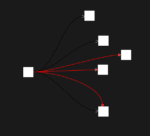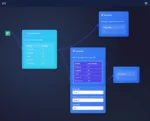
by tyler garrett | Jun 18, 2025 | Data Processing
Imagine uncovering valuable insights hiding just beneath the surface of your data landscape—insights that allow you to confidently predict market changes, operational bottlenecks, and customer preferences. Correlation mining is the analytics compass that guides businesses through vast oceans of data, systematically revealing meaningful connections that influence operational efficiency, strategic planning, and revenue growth. As technology matures and analytics capabilities expand rapidly, organizations that master correlation mining stand to significantly outpace competitors, empowered with actionable intelligence that moves beyond mere data collection to in-depth relationship analysis.
Understanding Correlation Mining: Going Beyond Surface-Level Indicators
In its essence, correlation mining leverages analytical methods and computational intelligence to unearth hidden relationships between different variables and data points across large, diverse datasets. Rather than merely identifying obvious patterns, correlation mining digs deeper, illuminating less obvious yet critical relationships, which traditional analytics might overlook. It enables businesses to uncover meaningful associations between individual factors such as market conditions, customer behaviors, and operational efficiency—associations that can unlock significant opportunities and advantages.
Strategically employing correlation mining as part of your data analytics arsenal provides clarity and depth to your insights. For instance, an operational insight into employee productivity data might uncover a hidden correlation with automated deployment processes. A well-structured DevOps and automation strategy, thus revealed through correlation mining, becomes more than an improvement—it becomes transformative. This analytic technique helps businesses comprehend nuances that direct significant decision-making processes, delivering increased profitability, refined processes, and optimized performance.
The Technology Behind Correlation Mining: Techniques and Methods
Technologically sound correlation mining involves sophisticated algorithms and analytic methods that effectively identify relationships within complex datasets. Among these techniques are traditional statistical analysis, cluster analysis, association rules learning, and advanced machine learning algorithms like neural networks and decision trees. Another powerful approach includes employing data sketches and approximate algorithms, which can utilize large-scale datasets efficiently, circumventing computational bottlenecks that often arise in traditional approaches.
Indeed, sophisticated analytical approaches—such as clustering algorithms, multivariate regression models, and predictive analytics—are increasingly important. Predictive analytics, for example, can leverage correlation studies to enhance demand forecasting capabilities, thereby significantly improving efficiency and responsiveness. Similarly, by applying Hexagonal architectures and data pipeline strategies such as the Ports & Adapters architecture, companies achieve improved modularity and flexibility in processing immense volumes of correlated data.
Adopting these methods not only ensures more accurate, actionable results but also fosters a culture of comprehensive, innovative analytics across teams, extending the strategic possibilities of correlation mining across all business units and workflows.
The Strategic Value of Correlation Mining in Decision-Making
Strategically, correlation mining brings significant value to business decision-making. It unlocks answers for executives and leadership teams by revealing important links between seemingly unrelated business aspects. By utilizing powerful analytics techniques to correlate vast quantities of diverse data, decision-makers acquire clarity into the complex dynamics affecting their business landscapes. From supply chain optimization to product pricing strategies, correlation mining amplifies the quality of strategic decisions.
Take geospatial data as an example: through rigorous analysis, businesses can study the correlation between location-specific performance and customer interactions at precise coordinates. When dealing with geospatial data, businesses must also confront complex challenges, such as precision loss in coordinate systems. Addressing these complexities within correlation mining and geolocation analytics empowers businesses to build more robust market strategies and operational optimizations that leverage unique geographic insights.
Advanced analytical methods like hyperdimensional computing approaches are used to intuitively represent high-dimensional relationships—further enhancing visibility in correlation analytics and the precision of strategic insights. Such frameworks empower executives to confidently execute complex, forward-thinking strategies derived from data-backed insights.
Applications of Correlation Mining Across Industries
Correlation mining is highly adaptable and has proven invaluable across a diverse array of industries. Healthcare organizations can correlate clinical outcomes and operational efficiency data to drive better patient care models. Manufacturers use correlation analysis between operational parameters, supply chain events, and demand to optimize production schedules and reduce waste.
In financial services, correlation mining significantly boosts risk management capabilities by linking portfolio metrics with macroeconomic indicators and market timelines to model proactive mitigation strategies. Retail businesses frequently leverage correlations between consumer buying trends, location-specific demands, and seasonal factors—thus enhancing inventory accuracy, minimizing waste, and increasing profits demonstrably. Moreover, human resource and employment analysts frequently leverage correlation methodologies for in-depth reports to identify trends, employers’ needs, and work trends—as demonstrated in our exploration of the impact of data analytics on job markets.
Across every industry impacted, bringing clarity to ambiguous data relationships through intelligent correlation mining analytics supports a more dynamic and proactive strategic decision-making culture—strengthening competitive advantages, accelerating responsiveness, and ensuring future-ready excellence.
Visualizing Correlation Insights Effectively
Identification of correlations is powerful, but effectively visualizing these insights is what truly turns correlation mining into an actionable asset. Selecting impactful visualizations enriches the understanding, accessibility, and actionable potential of correlated data insights. Effective data-driven visualization strategies—such as those we discussed previously on choosing the right chart types for your data—strengthen stakeholder engagement, turning abstract data relationships into intuitive insights that resonate across all decision-making audiences.
Techniques such as heat maps, scatterplots with regression lines, chord diagrams for relationship matrices, and composite visual structures are essential tools for visualizing intricate correlations. Additionally, leveraging structural design patterns, like Composite patterns, can enhance the intelligibility of highly nested or hierarchical data correlations, ensuring complicated interconnections become clear and impactful for stakeholders at all technical levels.
Businesses that smartly choose and implement correlation-specific visualizations find themselves well-positioned to clearly communicate complex findings, ensuring clarity, effective communication, strategic alignment, and cohesive execution of critical analytics-driven initiatives.
Leveraging the Power of Correlation Mining: Integrating SQL Server Analytics
Realizing the potential of correlation mining requires robust, enterprise-level data management and storage solutions. Microsoft SQL Server provides such solutions, offering powerful analytics capabilities, scalable databases, and optimized performance supporting advanced analytics workflows. By effectively integrating correlation mining techniques directly into your SQL Server solutions, you ensure robust, reliable, and responsive performance.
As specialists providing Microsoft SQL Server consulting services, we implement strategies and optimization tactics that leverage SQL Server’s advanced correlation features. Ensuring your technical capabilities precisely align with strategic objectives is vital. Seamlessly incorporating correlation analysis into your enterprise data strategy facilitates data-informed decision-making, strengthens data-driven cultures, and empowers innovation across your organization.
Conclusion: Future-Proof Your Organization with Strategic Correlation Mining
The modern digital economy indicates a constant rise in data complexity and an ever-increasing need for meaningful insights. Correlation mining promises profound strategic value to organizations willing to look beyond basic analytics towards more sophisticated and powerful data exploration. Unearthing hidden relationships ensures more precise predictions, enhanced operational efficiencies, and tangible competitive advantages. With effective application of correlation mining analytics paired with intelligent technologies, you future-proof your organization in a rapidly changing business landscape.
Ready to dive into the correlations waiting hidden in your data? Ensure your business thrives by strategically mastering correlation analytics, enriching your insights and empowering robust decisions across your leadership and organization.

by tyler garrett | Jun 18, 2025 | Data Processing
In the fast-paced, data-driven landscape that we operate in today, optimizing your applications for performance and efficiency is more important than ever. As business leaders and innovative technologists, we’re constantly dealing with datasets growing at exponential rates. With smart optimization strategies like the Flyweight Pattern in software engineering, you can dramatically slash the memory footprint of your systems, avoid costly performance bottlenecks, and drive faster, smoother interactions. Imagine handling millions of customer data records across your enterprise analytics tools or dashboard implementations like Power BI – without ever running into memory limitations or sluggish response times. In this guide, we’ll unpack how the Flyweight Pattern can streamline your repeated value management, offering you clarity and strategic insights into making your data-intensive applications leaner and smarter.
What is the Flyweight Pattern and Why Does It Matter?
The Flyweight Pattern is a structural design technique used in software engineering to share as much as possible between similar objects. Instead of creating multiple instances of objects containing the same data, the flyweight design enables applications to reuse shared objects, significantly reducing memory consumption. In scenarios where object count is massive and repetition is high—such as large-scale dashboards, financial applications, inventory systems, or analytics tools—the Flyweight Pattern becomes particularly powerful.
Why prioritize memory management? Because memory inefficiencies directly impact application performance, scalability, and responsiveness. If your dashboards or data visualizations require rapid interaction or handle big data streams, inefficient memory management can lead customers to churn, business analysts to frustration, and even crucial processes grinding to a halt. For businesses committed to building a truly data-driven culture, employing smart structures like the Flyweight Pattern is important. It ensures you’re not making redundant copies of identical or repeated data values, thereby preventing unnecessary memory load and ultimately enhancing performance.
Focusing your strategic choices on structural efficiency means your team can more reliably meet customer expectations, achieve quicker feature development cycles, and maintain data integrity across multiple systems, while comfortably scaling to larger datasets.
Unpacking How the Flyweight Pattern Works
To visualize the power behind the Flyweight Pattern, imagine a book library system tracking thousands of book details: title, author, publisher, and year of print. If the same book edition appears numerous times, storing separate objects for each occurrence duplicates the identical data. This redundancy consumes valuable memory and degrades performance. Instead, the Flyweight Pattern carefully distinguishes intrinsic (shared, unchanging) information from extrinsic (unique or changeable) elements.
Intrinsic state involves stable properties that are meant to be shared. Continuing our library example, the intrinsic states of a book, such as title, author, and publisher details, remain constant across different library branches or borrowers. These intrinsic properties are perfectly suited for flyweight sharing. The extrinsic state, however, involves individual copies’ statuses or characteristics—the location in the library, renter information, or due date—unique details not suitable for sharing.
Implementing a dedicated flyweight factory effectively oversees the reuse of shared, intrinsic-state objects. When requesting a book instance, the application queries the flyweight factory to check if the intrinsic information already exists in memory. Either the object reference is reused from memory, or a new instance is added to ensure future reuse opportunities. With this method, your system avoids unnecessary duplication, preserving valuable resources for other data-intensive processes like schema registry enforcement in data integration flows or advanced analytics.
When to Consider Implementing the Flyweight Pattern
Understanding when your data-intensive applications or systems could most benefit from applying the Flyweight Pattern can enable smarter technology investments. Consider employing the strategy if you observe any of these common scenarios in your applications:
High Volume of Repeated Objects
Applications encountering repetitive datasets, such as processing customer interactions, standard product details, log entries, or historical transaction data, reap substantial efficiency gains from Flyweight. Reusing intrinsic data reduces memory strain and enables more fluid user experience. For instance, extend this efficiency strategy to solve challenges like handling time zones in global data processing, where constant reuse of time-zone-related metadata greatly reduces redundancy.
Memory Usage Bottlenecks
If memory fragmentation, increased allocation demands, or frequent garbage collection cycles obstruct scaling your application to billions of records, the Flyweight approach significantly reduces memory load. Our recent data engineering case study scaling to handle 1 billion events daily clearly demonstrates how efficiently managing repeated values is critical to massive scalability.
Dashboard and Visualization Performance Issues
Analytics-driven organizations employing dashboards in tools like Power BI commonly see performance degradation resulting from repetitive, memory-intensive data storage. Leveraging Flyweight reduces this burden significantly, providing smoother interactions at scale, complementing other lightweight strategies like knowledge distillation techniques for lightweight dashboard models.
Flyweight Pattern in Real-World Examples and Big Data Applications
Real-world organizations regularly depend on Flyweight structural pattern implementations to address large-volume data repetition and scalability. Consider a fast-paced financial services setup—millions of financial trades accumulate daily. Many standardized transaction attributes repeat frequently: financial instrument details, historical exchange data, or common metadata. Applying Flyweight dramatically shrinks the memory footprint, resulting in faster data ingestion, processing, and dashboard responsiveness.
This efficient structure can further enhance efficient probabilistic data (like HyperLogLog or Bloom filters) utilization, as explained in our exploration of Bloom filters and HyperLogLog, by mitigating redundancy across numerous probability estimators managing high volume data streams.
The Flyweight Pattern also complements data visualization best practices, particularly when dealing with dense multidimensional visualizations. Our approach to color channel separation for multidimensional encoding inherently benefits from such memory optimization—sharing identical color gradient patterns or metadata definitions significantly improving dashboard load times and user interactions.
Potential Challenges and Risks to Consider
As with any strategic choice, understanding potential downsides and limitations ensures you leverage Flyweight efficiently. Initially constructing a robust flyweight factory requires planning and intentionality. Developers must identify clearly intrinsic versus extrinsic states, which can introduce complexity. Incorrectly implementing this pattern can cause confusion, challenging readability and maintainability.
Be aware that employing the Flyweight Pattern provides significant benefits only in situations with frequent object repetition. Without high repetition rates, complexity overhead may outweigh potential profits. Understand your domain clearly, perform feasibility studies, and ensure you’re appropriately implementing this optimization strategy to match use cases effectively.
Also, consider potential impacts on latency from object reuse. Although optimized memory reduces loading times, reusing shared objects extensively may slightly impact application runtime if managed incorrectly. Calculate trade-offs carefully when planning the implementation of this optimization in highly distributed or parallel processing contexts. Relatedly, explore how optimizing data skew can improve distributed environments, as discussed in our insights about the hidden cost of data skew in distributed processing systems.
Embrace Flyweight Patterns to Innovate Your Data-Driven Solutions
Effective data management is crucial for maintaining modern, scalable applications. Businesses dedicated to sustained innovation must embrace design patterns like Flyweight to optimize data efficiency. Boost your analytical engine capacity, dashboard responsiveness, big data integration, and enterprise scalability with Flyweight Pattern strategies to manage repetitive data elements effectively.
We believe understanding and strategically applying advanced software engineering patterns enrich your organization and profoundly simplifies complex data processing challenges. If you’re looking to integrate these optimization techniques effectively in your analytics and visualization projects—or need tailored advice on advanced data strategies and Power BI dashboards—explore our specialized Power BI consulting services and empower your organization’s innovation journey.
Ultimately, patterns like Flyweight aren’t just memory tricks—they represent intentional architecture decisions supporting agility, accuracy, and innovation for stakeholders who demand continuous improvement, efficient scaling, and strategic data intelligence.

by tyler garrett | Jun 18, 2025 | Data Processing
In today’s fast-paced digital environment, enterprises no longer have the luxury of relying solely on nightly batch processing. Executives increasingly demand real-time insights—driving agile decisions measured in moments rather than days. When we talk about streaming data, Delta Lake and incremental tables emerge as game-changing solutions. They allow organizations to effectively harness change data streaming, improving their data warehousing flexibility, data quality, performance, and ultimately empowering a savvy approach to analytics. As data strategists specializing in advanced data analytics and innovative solutions, we frequently advocate Delta Lake to our clients. Through understanding incremental tables and streaming data, businesses can realize exceptional real-time analytics capabilities that are increasingly essential in competitive markets.
Why Incremental Tables Are the Backbone of Real-Time Analytics
Traditional batch processing architectures often struggle under the demands of modern real-time data flows. Dependency on overnight ETL processes has become a bottleneck, preventing timely strategic decisions. Incremental tables circumvent these challenges by recording only the latest changes—including insertions, updates, or deletions—to your data sets. This minimalistic yet potent method enhances performance, reduces overhead, and unlocks real-time analytics capabilities, essential for decision-makers tasked with managing increasingly complex data streams.
Incremental tables supported by platforms like Delta Lake provide scalable solutions to this common challenge. By continuously tracking changes rather than maintaining bulky historical snapshots, organizations cut time to insight significantly. Delta Lake brings together the ease of use of traditional data warehousing with the power of incremental streaming—leveraging delta logs to keep track of data versioning. This approach benefits businesses by greatly improving query performance and allowing more agile analytics practices, ensuring accelerated decision-making to enhance market responsiveness. Whether implementing data strategies for startups or large corporations, adopting incremental tables paves the groundwork for real-time data consumption—transforming operational agility.
As organizations embrace true real-time analytics enabled by incremental tables, they naturally strengthen their competitive positioning. We consistently observe companies stepping into powerful, event-driven analytics environments—taking immediate action based on fresh, trustworthy data in a timely manner.
Understanding Streaming Change Data Capture (CDC)
Change Data Capture or CDC lies at the heart of incremental table methodologies. CDC involves capturing database changes at their source as they happen in real-time—this includes inserts, updates, and deletes—then streaming those changes securely to downstream data destinations. Integrating CDC with Delta Lake elevates incremental data pipelines into truly responsive, high-performing data-driven organizations that demand quick, confident adjustments.
CDC integration helps enterprises move away from the traditional static snapshots and move toward incremental updates of data analytics repositories. Platforms like Delta Lake allow real-time ingestion of CDC data feeds, maintaining accurate, granular records without repetitive batch rebuilds. Companies leveraging CDC-streaming strategies immediately elevate their data governance and quality because incremental, event-driven processing inherently promotes better accuracy and data quality controls.
Within a well-governed data environment—like the federated governance solutions explored in our post Federated Data Governance Implementation Across Business Units—CDC’s potency in generating clean, relevant, and recent information fuels superior analytics and decisioning processes. By focusing on incremental change streaming, organizations accelerate feedback loops, enhance operational responsiveness, and achieve finer-grained control over information quality and timeliness. This enables executive teams to act smarter, make proactive and data-driven decisions faster.
The Power of Delta Lake in Incremental Data Processing
Delta Lake uniquely combines transactional reliability procedures with scalable incremental ingestion of streaming data—an invaluable technology for today’s analytics-driven organizations. Built atop open-source technologies like Apache Spark, Delta Lake is purpose-built to support incremental updates efficiently and accurately. It pairs rapid streaming capabilities with transactional integrity, enabling businesses to ingest and query incremental changes swiftly and seamlessly.
Delta Lake addresses common data warehousing pain points by minimizing downtime and dramatically increasing performance with incremental updating. Incremental tables in Delta Lake use log tracking mechanisms (delta logs) that clearly indicate data changes from the previous state. This clarity means analysts can query the freshest data reliable—mitigating time-consuming indexing issues discussed in our post Enhancing Data Retrieval With Indexing in SQL. With fewer heavy batch processes, analytics operations become inherently stable, agile, and highly automated, dramatically cutting back data latency timeframes.
On-the-fly schema evolution capabilities also grant security and flexibility. Organizations profiting from Delta Lake’s incremental processing capabilities can easily integrate advanced technical innovations without sacrificing performance standards or data accuracy, ensuring strategic continuity and minimal disruptions to business operations.
Implementing Incremental Tables: Practical Considerations for Success
Implementing incremental table strategies demands comprehensive technical expertise and structured planning. Successfully operationalizing streaming CDC using Delta Lake means proactively managing schema changes, security implications, and data modeling complexity to minimize friction across data initiatives. Thoughtful implementation involves rigorous planning and thorough testing to ensure successful, secure, and compliant deployments.
Incremental tables require optimal integration with database resources, frequently necessitating advanced SQL understanding. Companies can benefit greatly from mastering key SQL concepts, like those highlighted in our article Filtering Data with Precision Using SQL’s WHERE Clause. Streamlining increment-based retrieval processes helps optimize the database workload and provides robust data analytics integration. Furthermore, proper implementation supports strong compliance-related processes. Integrating incremental processes in conjunction with governance workflows can efficiently automate privacy controls—part of a strategy explored further in our blog on Privacy Impact Assessment Automation Framework.
Thorough implementation also means addressing critical points of flexibility early in your architecture—for example, recursive data processing approaches discussed in Recursive Data Processing for Hierarchical Structures. Creating flexible, scalable architectures enables enterprises to comfortably adapt incremental processing methods while managing data hierarchies effectively, positioning them to quickly scale future analytics ambitions.
The Broader Impact: Enhancing Data Agility Across Your Organization
With incremental tables and Delta Lake, organizations substantially enhance their ability to react quickly to evolving conditions, driving measurable business agility. Decision-makers benefit immensely from the increased responsiveness these technologies provide—ability to recognize emerging trends immediately, act proactively, and meet strategic objectives with data-informed precision.
Leveraging incremental tables encourages business units across your organization to embrace data-driven decision-making. Empowering analysts and data scientists with timely, accurate incremental data streams means they can experiment more daringly, adjust faster, and deliver insights that resonate in real-world effectiveness. In industries increasingly characterized by volatility, this agility represents critical competitive advantage.
We’ve experienced firsthand through collaborations such as our partnership outlined in The Role of the University of Texas at Austin in Training the Next Generation of Data Analysts, how equipping teams with strong incremental data pipeline expertise creates lasting impacts. As your organization leverages incremental tables, employee analytics capabilities naturally mature, fueling innovation across the enterprise and sustainably embedding a data-driven culture.
Conclusion: The Strategic Advantage of Incremental Tables with Delta Lake
Incremental tables and streaming CDC using Delta Lake create powerful opportunities for enterprises seeking agile, responsive, and reliable data infrastructures. Incremental approaches improve efficiency, accelerate generation of insights, enhance data quality, and ultimately drive significant competitive advantage. Successfully deploying incremental solutions requires careful planning, in-depth expertise, robust governance frameworks, and strong data engineering skills.
At Dev3lop, we recognize that implementing these solutions ultimately means crafting powerful technical strategies aligned precisely to organizational goals. Incremental tables position your enterprise for sustained analytical maturity—delivering impactful business outcomes for today’s competitive landscape and into the foreseeable future.

by tyler garrett | Jun 18, 2025 | Data Processing
In a technology-driven ecosystem where data fuels decision-making and innovation mandates agility, latency can be a painful bottleneck holding back critical business decisions and analytics agility. Organizations striving for competitive advantage must master the art of efficient data access and robust application performance. The Proxy Pattern emerges as an invaluable architectural strategy that seamlessly bridges the gap between remote data resources and timely user responses. By leveraging proxies, companies can optimize network interactions, reduce latency, and streamline data workflows without compromising reliability or scalability. Let’s unlock the power behind the Proxy Pattern and explore how its adoption can transform data-intensive processes, enabling your organization to stay ahead of the competition through superior performance and seamless digital experiences.
Understanding the Proxy Pattern in Software Architecture
At its core, the Proxy Pattern is a structural design pattern that acts as a surrogate or placeholder for another object, controlling access to it. The primary purpose of implementing this pattern is to enhance functionality, security, or performance while maintaining transparency to the end user. Traditionally associated with object-oriented programming (OOP), proxies fit uniquely within dynamic and distributed network environments. Especially today, where data often resides remotely—in cloud-based analytical platforms, distributed storage solutions, or API integrations—proxies alleviate the impact of latency and bandwidth bottlenecks by intelligently overseeing network communication.
The Proxy Pattern introduces an intermediary object that encapsulates the complex logistics of connecting to an external service, ensuring efficient communication and optimized access. This intermediary can cleverly manage caching, authentication, logging, or load balancing behind-the-scenes, shielding clients from the underlying network complexities. For example, a virtual proxy can delay the complete retrieval of an extensive dataset until explicitly required by the user, significantly improving perceived responsiveness. Alternatively, as referenced in our recent article on quantum computing applications, proxies might also be employed strategically to regulate and control resource-intensive computational operations remotely executed on powerful systems.
Embracing proxy architecture is critical for developing scalable digital solutions. Understanding its principles positions your organization to efficiently leverage a remote resource while addressing latency, security, and performance issues inherent in distributed computing.
Why Remote Data Access Presents Latency Challenges
In the era of big data analytics, remote data storage, cloud computing, and software-defined infrastructure, teams regularly encounter the challenge of fetching, analyzing, and visualizing remotely stored data. Remote datasets typically reside across widely dispersed geographical locations, sometimes even in different continents, connected through complex network infrastructures. This distance and complexity create latency issues impacting the responsiveness required for real-time insights and instant decision-making, consequences amplified further when dealing with real-time streams, IoT-generated data feeds, or massive datasets.
Latency can adversely affect operational excellence across diverse scenarios, including genomics research, online gaming performance, e-commerce shopping experiences, and predictive analytics engines. For instance, our exploration of genomics data visualization platforms consistently reveals how latency issues set inherent limitations on the timely rendering of complex genetic visualizations. Similarly, enterprise teams struggling to achieve enterprise-wide data standardization often encounter network latency bottlenecks that compromise data synchronization and quality assurance protocols across distributed teams or databases.
Simply put, latency breeds inefficiency, workflow disruptions, and dissatisfaction among end-users striving for immediate results. Organizations striving to enhance data-driven operations cannot afford these performance issues. Effectively overcoming latency barriers is thus fundamental to faster insights, agile decision-making, and competitive organizational excellence, making thoughtful implementation of solutions like the Proxy Pattern a necessity rather than an option.
How the Proxy Pattern Addresses and Mitigates Latency
The Proxy Pattern stands out in its ability to effectively counteract latency, reducing or eliminating the impact of remote data retrieval times. It does so primarily by optimizing three key functionalities: caching, asynchronous communication, and scalable resource management.
Intelligent Caching & Resource Conservation
A common proxy strategy involves caching frequently requested data. By storing a local copy of shared data or computation results, a proxy significantly minimizes network roundtrip times and bandwidth consumption, resulting in reduced latency for subsequent requests. Cached information can be proactively updated in the background, ensuring users access recent data without delays or performance trade-offs. This intelligent optimization aligns perfectly with our recommended practices for achieving robust data quality management by maintaining consistent, clean datasets close to application endpoints.
Asynchronous and Lazy Execution for Improved Responsiveness
Proxies introduce asynchronous or controlled-execution functionalities, enabling concurrent, non-blocking data access—thus eliminating delays when working with highly responsive real-time user interfaces or analytics dashboards. Employing asynchronous communication solutions, organizations adopting proxies can dramatically enhance user experience, navigate bottlenecks proactively, and maintain seamless performance. For tasks involving massive computational power such as machine learning models, image processing tools, or removing logos from images using Python, the proxy pattern ensures effective utilization of high-performance computing infrastructure without latency impacts.
When to Apply the Proxy Pattern at Your Organization
Strategically identifying use-cases suited to proxy pattern implementations empowers organizations with a clear path toward performance optimization. If your architecture involves extensive remote communication—such as cloud data warehouses, data lakes on Azure infrastructure managed by our Azure Consulting Services, distributed microservices-based analytics apps, or high-demand APIs—adopting proxy architecture could significantly amplify your organizational efficiency and flexibility.
Implementation of a Proxy Pattern is especially ideal in scenarios where:
- High latency owing to frequent remote data access impacts application performance and user satisfaction negatively.
- Heavy computation or large datasets must reside remotely but still provide seamless localized responsiveness to end users.
- Your system demands stringent security, controlled access, or logging, best delivered via a foreclosure proxy to validate and filter all incoming data requests.
If you’re pursuing data-centric innovations such as predictive modeling, real-time data analytics dashboards, or sentiment analysis using tools like the Natural Language Toolkit, then integrating this architectural solution should be prioritized to realize significant benefits in task management, quality control, and time efficiency.
Best Practices to Effectively Implement Proxy Patterns
Deploying the Proxy Pattern effectively requires careful planning, meticulous execution, and thoughtful monitoring. Below are best practices your organization must keep top-of-mind when embracing this powerful architectural solution:
- Clearly distinguish responsivities between proxy and underlying remote services. Avoid feature creep or overloading proxies—maintain singular, well-defined responsibility.
- Prioritize security rigorously. Ensure proxies perform identity verification, session management, and carefully log all interactions and errors. This fortifies security at critical network access junctures.
- Enable monitoring and auditing. Track proxy successes, cache misses, call durations, latency metrics, errors, and network anomalies rigorously, positioning teams to rapidly troubleshoot issues and improve proxy performance iteratively.
- Adopt caching judiciously, determining the freshness duration of data crucial to user insights and decision accuracy—for instance, data visualization principles inherently rely on recent, timely, and clear insights.
- Consider orchestration and load balancing capabilities that proxies naturally support when designing highly scalable analytics infrastructures capable of leveraging relational capabilities; for more insights read our article on Maximizing Data Processing Speeds.
- Review upcoming architectural shifts in data integration methodologies such as whether ELT makes more sense than ETL for integrating proxies seamlessly in existing and future data workflows.
Conclusion: Achieving a Competitive Advantage with Proxy Patterns
The Proxy Pattern represents a potent architectural design solution for forward-thinking organizations seeking to overcome latency hurdles inherent in remote data access. Leveraging this pattern drives improved performance, streamlined network communication, enhanced user experience, and a robust justification for achieving clear competitive differentiation. Your organization’s commitment to applying intelligent, strategically placed proxies showcases your proactive ability to deal with latency challenges, enabling your team to focus on innovation, informed decision-making, and world-class data analytics.
By enhancing productivity, improving user satisfaction, and accelerating business insights, Proxy Pattern adoption delivers significant impact and represents an essential strategy for any technology-driven organization dedicated to future-proof data operations and attaining digital excellence.

by tyler garrett | Jun 18, 2025 | Data Processing
In the rapidly evolving realm of big data, organizations are handed an exciting yet challenging paradox: capturing every data point provides incredible insight, yet it’s often practically infeasible. Imagine you’re tracking billions of interactions across digital platforms or capturing sensor data from tens of thousands of IoT devices—the sheer volume quickly outpaces traditional storage capacities and processing speeds. Thankfully, modern innovation has provided strategic, elegant solutions through approximate algorithms, commonly termed “Data Sketches.” These innovative techniques enable businesses to efficiently estimate large-scale metrics with impressive accuracy and drastically reduced computational loads. As strategic technology consultants, our composed insight into data sketches illuminates the path for data-driven leadership looking to harness big data’s actionable intelligence, avoid overwhelming infrastructures, and seamlessly integrate analytics into organizational processes.
Understanding Data Sketches and the Power of Approximation
Data sketches refer to specialized algorithms designed to estimate metrics rather than calculate them precisely—beneficial in scenarios where storing or processing an entire dataset would be prohibitively costly or impractical. Instead of maintaining a complete record, sketches offer summaries or compressed representations of massive datasets through smart sampling, hashing, and probabilistic methods. Tools such as HyperLogLog, Count-Min Sketch, and Bloom Filters exemplify this approach, delivering near-instantaneous approximations of distinct events, frequency of items, or membership queries, respectively.
While these algorithms inherently produce approximations—with a predefined, mathematically quantifiable error—the reality of data-driven decision-making hardly ever requires absolute accuracy; most business scenarios tolerate small discrepancies in exchange for greater speed and efficiency. For instance, an e-commerce platform tracking unique visitors can leverage HyperLogLog to approximate unique users precisely enough for accurate trend analysis and performance reporting, enabling stakeholders to respond swiftly to market conditions. This pragmatic alignment with real-world decision-making scenarios exemplifies our philosophy of innovation consulting, where strategic approximation accelerates the path to insights without sacrificing practical decision support and organizational agility.
Real-World Applications of Data Sketches by Industry
Data Analytics for Environmental Sustainability
In urban planning and environmental sustainability efforts, data sketches become instrumental when analyzing substantial volumes of sensor-generated data streams. For instance, initiatives aimed at leveraging data analytics to improve sustainability in Austin’s urban environment, significantly benefit from approximate algorithms. Municipal organizations capturing the flow of traffic, air quality indicators, and waste collection logistics can leverage Count-Min Sketch for rapid estimations of frequently encountered events and variables.
By rapidly analyzing sensor outputs and estimating high-frequency scenarios, city planners gain near-real-time insights to optimize urban infrastructure more sustainably. Recognizing how approximations directly translate into tangible benefits in municipal management underscores the potential of data sketches as a cornerstone of modern analytics-derived environmental policy. As dedicated consultants, we encourage this pragmatic innovation, as approximate analytical methodologies often prove crucial within highly dynamic, data-intensive municipal activities.
Mainstream Adoption in Advertising and E-commerce
Advertising platforms and e-commerce enterprises frequently deal with immense user activity and interactions. Successfully measuring audience uniqueness and ad performance metrics to gauge campaign efficiency and reach becomes a daunting task without employing data sketches. Deploying HyperLogLog to estimate unique page views, clicks, or interactions empowers decision-makers to rapidly analyze massive data volumes, accurately measuring key marketing KPIs without the prohibitive computational resource demands.
Retailers leveraging progressive data loading for responsive user interfaces can couple these sketch algorithms with incremental data retrieval, significantly enhancing user responsiveness while measuring performance KPIs with acceptable accuracy. As strategists at the intersection of analytics and innovation, we advocate these precise approximations to optimize customer interaction analytics, allowing organizations to act swiftly upon insights instead of delaying strategic decisions due to overwhelming analytical processing overhead.
Selecting the Right Sketch Algorithm for Your Metrics
Choosing the appropriate sketch algorithm depends heavily on the specific metric you intend to estimate. Where accuracy and error margins are defined clearly, it becomes easier to select amongst widely-used sketch algorithms.
If you’re tracking cardinality (distinct counts) for massive data sets, HyperLogLog shines through its impressive ability to handle billions of unique items with minimal error ratios. Alternatively, frequency-related queries—such as event counts—benefit greatly from the Count-Min Sketch, renowned for efficiently approximating event-frequency queries and quickly isolating frequent events within large-scale log streams.
Moreover, membership queries and filtering scenarios, common within cybersecurity login authentication systems and real-time fraud detection pipelines, often adopt probabilistic Bloom Filters. These filters rapidly answer membership queries—whether an item is within a massive dataset—without storing the entirety of datasets explicitly.
When properly selected, sketch algorithms boost efficiency and save considerable storage, CPU, memory, and analytics overhead—considerations that strongly complement organizational objectives, especially in cases where maintaining extensive detailed records such as code tables and domain tables become cumbersome or unsuitable within transactional processing environments.
Challenges and Considerations When Implementing Data Sketches
Harnessing approximate algorithms like data sketches is not without its nuances and challenges. Most crucially, implementing approximate methods requires upfront clarity regarding acceptable accuracy levels and error tolerance. Clearly articulated tolerances enable better algorithm selection and guarantee predictable, consistent performance amidst demanding production environments.
Additional complexity arises when communicating these approximations clearly and transparently to business stakeholders accustomed to exact calculations. Education and effective internal communication about data sketches’ efficiency gains and acceptable precision trade-offs are crucial elements to ensure adequate stakeholder buy-in.
Moreover, as consultants well-acquainted with sensitive data environments such as healthcare, we also heavily emphasize robust data governance practices, especially concerning analytics involving personally identifiable information (PII). Proper de-identification techniques for protected health information, integrated seamlessly within sketching methodologies, prevent privacy mishaps while thriving within regulated environments.
Ensuring that these considerations harmoniously align with your organizational priorities means embracing data sketches thoughtfully, balancing innovation with transparency. In this balance resides powerful analytical capability with optimal efficiency—for rapid, assured organizational growth through analytics.
Integrating Data Sketch Algorithms With Modern Data Infrastructures
Implementing data sketch algorithms efficiently requires understanding how they integrate into modern data stacks and architectures. Distributed data processing platforms, streaming architectures, and scalable databases must efficiently adopt algorithms without incurring extensive overhead, bottlenecks, or latency.
High-throughput environments that perform real-time analytics or encounter large volumes of incoming data require well-designed backpressure mechanisms to avoid overwhelming internal system components. Data sketches naturally complement these architectures by presenting manageable data summaries that can reduce memory utilization, enabling fluid real-time analytics.
Additionally, organizations transitioning toward modern architectures leveraging databases like MySQL can capitalize on expert MySQL consulting services to optimize query performance and adopt data sketching and approximations within relational paradigms effectively. Our strategic expertise ensures a harmonious integration of sketch methodologies within established data ecosystems, maintaining consistent speed advantages, accuracy estimates, and streamlined analytical operations.
Properly integrating sketch algorithms doesn’t just imply technology—they introduce a refined outlook toward analytics efficiency, enabling innovative convergence between approximations and accuracy. Through proactive integration, businesses empower analytic agility that complements corporate resilience in navigating today’s dynamic big data landscapes effectively.
Conclusion – Strategic Approximation as a Competitive Advantage
Approximate algorithms epitomized by data sketches fundamentally redefine analytics practically, recalibrating the balance between computational cost, speed, and accuracy. Transitioning towards strategic approximation frameworks, organizations can analyze vast data volumes faster, support more responsive decision-making, optimize resource allocation, and consistently align technology strategy with business imperatives.
Leveraging such innovation becomes not just advantageous but strategic, enabling decision-makers to break through computational barriers that traditionally limited insights. Embracing data sketches positions forward-thinking organizations to outperform competitors reliant on conventional, exact—and slow—analytics.
As strategic partners in your data-driven transformation journey, we believe in guiding our clients through these innovative methodologies. By understanding the power and nuances of data sketches, your business can capitalize uniquely on holistic insights at unprecedented speed and efficiency, securing a compelling analytical and competitive advantage.
Interested in embracing data sketches within your analytics strategy? We’ve recently addressed common implementation troubleshooting in our guide on problem resetting your PC on Windows 10 safe mode, supporting streamlined technology outcomes across organizational infrastructure.

by tyler garrett | Jun 18, 2025 | Data Processing
In today’s rapidly evolving digital landscape, data integration poses an ongoing challenge for enterprises striving for streamlined operations and real-time analytics. Your thriving tech stack needs to effortlessly communicate, yet incompatible interfaces and mismatched data formats frequently stall innovation. Enter the Adapter Pattern—your on-the-fly translator and integrator, seamlessly bridging technological divides and enabling efficient communication. At the strategic intersection of software development and analytics, adapting legacy systems and integrating real-time data streams becomes simpler and more cost-effective with a clear adaptation model. Let’s explore how the Adapter Pattern empowers decision-makers with versatility, reduces complexity, and accelerates the realization of your digital transformation goals.
Understanding the Versatility of the Adapter Pattern
In software architecture, design patterns are essential solutions formulated by developers over decades to overcome recurring engineering challenges. One of the most practical and widely used patterns is the Adapter Pattern. Simply put, it acts as a bridge, enabling incompatible interfaces to work together seamlessly. Whether integrating a legacy CRM system, migrating databases, or leveraging edge analytics, this design pattern becomes indispensable. By implementing adapters strategically, businesses can leverage legacy systems, utilize modern solutions, and ensure seamless enterprise-grade data communication at scale.
The Adapter Pattern works similar to real-world adapters used to connect incompatible electrical plugs and sockets. In software terms, these “plugs and sockets” represent incompatible interfaces between systems or data structures. As data-intensive applications grow increasingly varied—spanning everything from relational databases fortified with advanced indexing methods to applications employing runtime analytics built upon reinforcement learning techniques for query optimization—efficient translation and integration solutions become paramount. The Adapter Pattern ensures interoperability and scalability across all technology layers, safeguarding system integrity while promoting agile innovation.
At its foundation, the Adapter Pattern enables forward-looking and innovative data strategy, allowing organizations to integrate new transformative technologies without eliminating established legacy assets. Organizational agility significantly improves as interfaces evolve and adapt much faster in response to shifting data demands.
Differentiating Object Adapter and Class Adapter
The Adapter Pattern comes in two distinct implementations: object adapters and class adapters. While fundamentally similar, these two implementations differ slightly in their approach and could be strategically deployed depending on the context.
Object Adapter
An object adapter uses composition—encapsulating the source object—to provide the desired interface and achieve translation. Its inherent flexibility makes it suitable for most scenarios, allowing it to dynamically interact with objects without changing their underlying implementation. Object adapters simplify evolving interfaces, enabling seamless handling of data transformations and integrations in complex enterprises.
Imagine integrating complex JSON data streams into legacy SQL databases. The object adapter wraps around JSON data streams, transforming their structure dynamically to fit directly into a relational, strongly typed environment. This approach aligns strategically with current data engineering best practices, particularly valuable in building flexible and innovative data engineering career paths. Object adapters encourage modularity, facilitating straightforward, strategic integrations and reducing the total cost of ownership by minimizing major codebase modifications.
Class Adapter
In contrast, a class adapter leverages inheritance and often requires multiple inheritances—particularly prominent in programming languages that support this construct directly. Though potentially powerful, this requirement for inheritance undoubtedly limits its deployment contexts. It’s ideally suited for scenarios where data interchange and adaptation are tightly bound or highly predictable. Class adapters are faster and simpler by design, making them useful in performance-critical scenarios—such as real-time analytics—where speed and efficiency matter greatly.
Strategically choosing between object and class adapters largely depends on the complexity and performance requirements of interfaces within the systems. Understanding specific integration scenarios, workload characteristics, and scalability demands empowers strategic decision-making, ensuring the Adapter Pattern consistently yields optimal outcomes.
Adapters in Real-Time Analytics and Data-Driven Innovation
Real-time analytics has transformed industries, democratizing insights and empowering enterprises with unprecedented opportunities for proactive, informed decision-making. As analytics and data-driven decision-making become ubiquitous, the significance of adapters to manage complex integrations, transformation pipelines, and interfacing formats increases greatly. Integrating diverse formats—such as streaming IoT logs, structured SQL databases, or even legacy system APIs—with real-time analytical frameworks becomes feasible via the Adapter Pattern.
Take enterprise scenarios incorporating sophisticated data governance practices—such as implementing record-level security requirements tied directly to data context. Adapter patterns can dynamically and efficiently enforce data security constraints while integrating multiple heterogeneous systems. Similarly, when embracing novel visualization paradigms such as non-Euclidean visualization techniques, data must often undergo significant transformation between backend storage and the presentation layer. Adapters quickly and effectively interface, enabling visualization of complex datasets with clarity and performance.
Organizations leveraging data-driven innovation can confidently simplify interoperability. By strategically integrating adapters within analytics workflows, enterprises bridge data incompatibilities, improve system observability, and speed up issue resolution. Strategic implementations fundamentally enhance flexibility, agility, and decision-making consistency.
Adapter Pattern in Modern Data Integration and ETL vs. ELT
Effective data integration sits at the heart of modern analytical systems, with data moving continuously between diverse sources and destinations. In recent years, extract, transform, load (ETL) workflows have given way to increased adoption of extract, load, transform (ELT)—with data transformations happening after data arrives in destination data lakes or warehouses. For enterprises navigating vast amounts of complex data, understanding why ELT makes more sense than ETL in 2025 is crucial for maximizing data agility.
Adapters serve as powerful companions in ELT workflows, enabling transformations and integrations at a pace that mirrors modern analytics demands. By converting formats on-the-fly, adapters make transformations more manageable, dynamically transforming data without impeding scalability. Real-time or near-real-time ELT workflows require instantaneous format conversions; the Adapter Pattern helps engineers build scalable and extensible pipelines that minimize latency and performance bottlenecks.
At Dev3lop, our advanced ETL consulting services deploy Adapter Patterns strategically in robust, high-performance frameworks. Whether you’re migrating data workloads, structuring expansive data lakes, or adapting pipelines to leverage new technologies, integrating Adapter Patterns simplifies previously challenging tasks—saving time, accelerating value, and often significantly reducing operational complexity.
Strategic Benefits for Decision-Makers and Innovators
For managerial decision-makers tasked with guiding strategic initiatives and investments, understanding the Adapter Pattern’s potential unlocks significant competitive advantages. On-the-fly adapters mitigate intensive engineering efforts, enhance software reliability, and quickly extend capabilities without extensive reinvention. This facilitates effective decision-making—maintaining a competitive edge by accelerating innovation cycles and simplifying development strategies.
Adapter Patterns significantly streamline interfacing efforts, bolstering system resilience and reducing downtime. By relying on proven design patterns, enterprises achieve more robust architectures that adapt fluidly to market pressures and emerging technological opportunities. Leveraging Adapter Patterns enhances software maintainability, reduces redundancy, simplifies orientation for new hires, and organically promotes forward-leaning solutions within your technical teams—aligning smoothly with long-term tech and managerial strategies.
Investing strategically in such solutions demonstrates leadership commitment toward fostering a flexible and responsive digital ecosystem. Managers deploying the Adapter Pattern confidently oversee optimized resource utilization, accelerated time-to-value, and a robust future-ready technological environment.
Conclusion: Embrace the Adapter Pattern to Simplify Integration and Boost Innovation
Adapter Patterns offer compelling, proven approaches for integrating incompatible systems, reducing software complexity, and strengthening digital transformation initiatives within dynamic corporate landscapes. As technologies and data challenges intensify, scalable and innovative solutions become strategic necessities.
At Dev3lop, we believe strongly in empowering decision-makers and technology architects alike through proven, impactful design patterns like adapters. When employed strategically across your enterprise, the Adapter Pattern increases agility, reduces integration friction, and optimizes operational performance—accelerating digital transformation sustainably into the future.






























